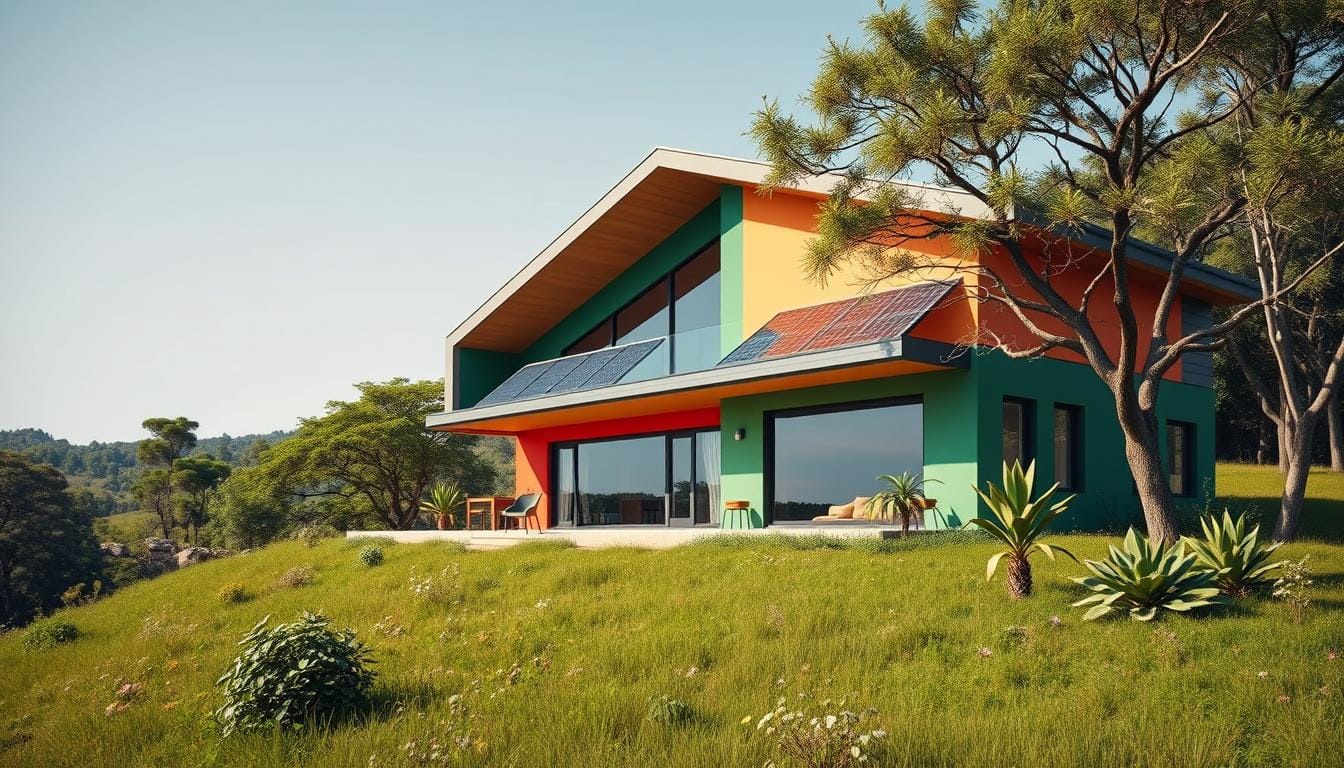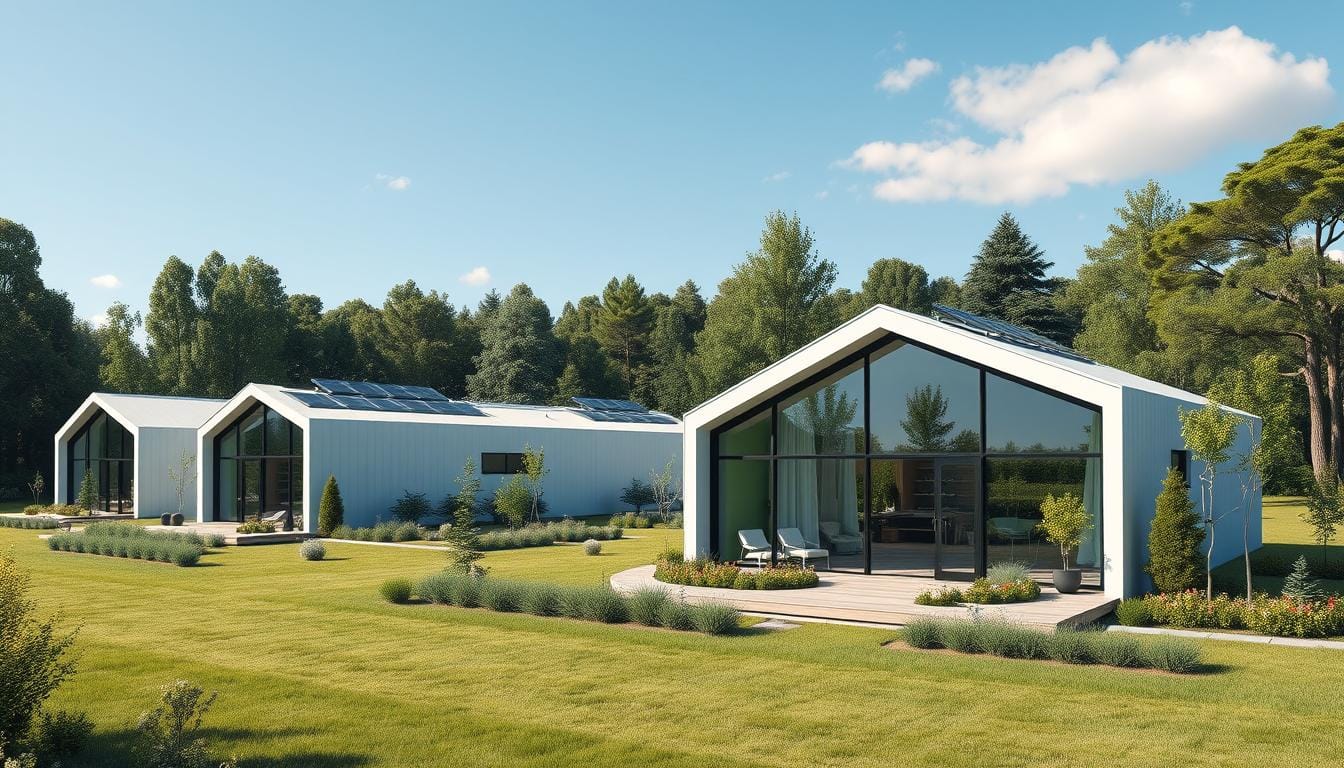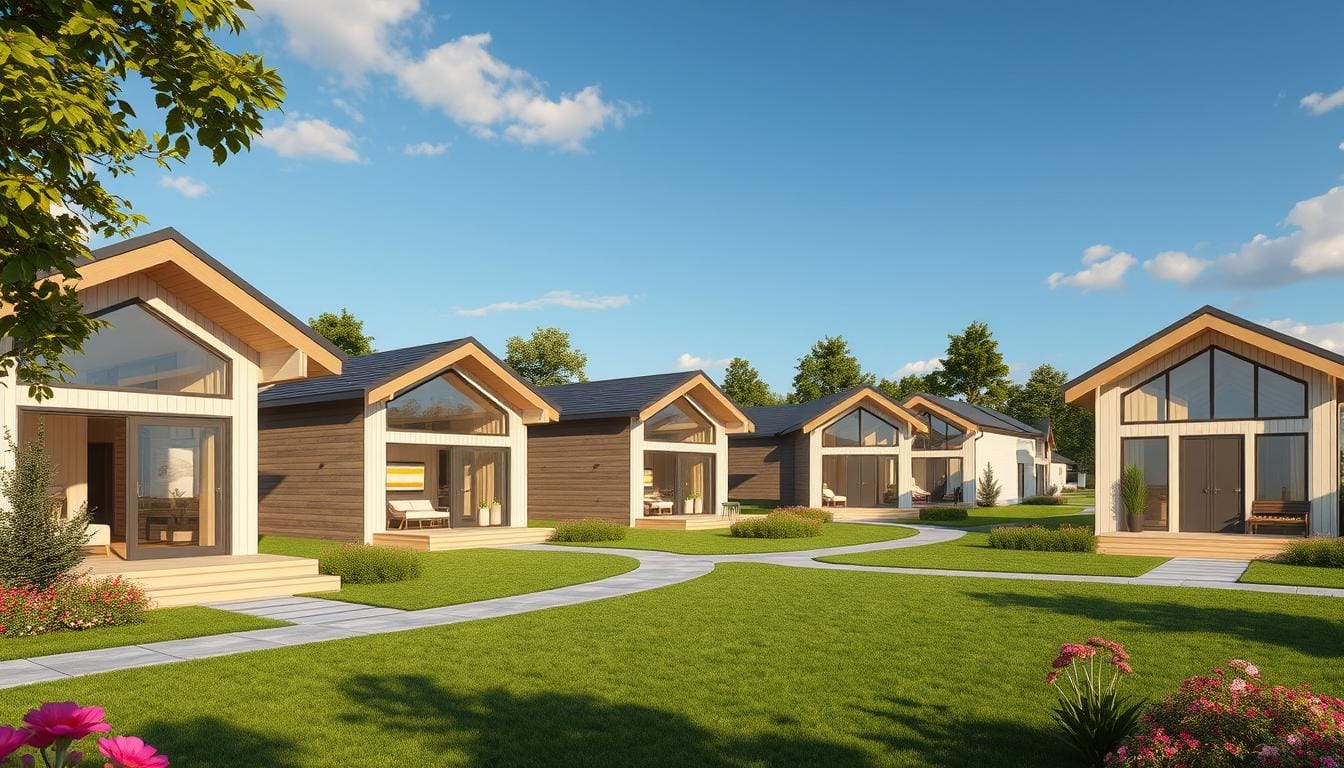African prefab houses are a smart answer to the housing problems in many countries. They are built quickly and are cheaper than traditional houses. These homes use green materials and save energy, fitting the needs of homes and schools.
These houses are made in factories first, then put together fast. This method cuts down on the time and harm to the environment. It’s a big step towards affordable and green homes in Africa.
KARMOD is at the forefront of prefab homes in Africa. Their houses come with solar panels and are priced from about $15,000. They are built in just a few days, saving money in the long run. This makes them a great choice for many families.
With a huge shortage of homes, prefab houses could be a big help. They are affordable, built fast, and good for the planet. They can handle Africa’s different climates and needs. Even in Zimbabwe, eco-friendly prefab houses show how well they work.
Key Takeaways
- African prefab houses offer a quick and cost-effective alternative to traditional housing.
- Pre-assembled modules in factories reduce environmental impact and construction time.
- Sustainable materials and energy-efficient features are prominently used.
- Significant to address Africa’s housing deficit and rapid population growth.
- Companies like KARMOD are leading with innovative solutions, including solar panels and other sustainable practices.
- Costs start at approximately $15,000, making them an affordable option for many households.
Introduction to African Prefab Houses
The prefab housing boom in Africa is changing the construction world. These homes are made for speed, cost savings, and to be kind to the planet.
Overview of Prefabrication
Prefabrication means building parts of a house in a factory and then putting it together at the site. This way, houses can be built up to 50% faster and with less waste. Companies like Prefabricated Africa and Karmod lead the way with top-notch, durable modular homes.

Benefits of Prefab Houses
Prefab houses solve many housing problems. They are affordable, well-insulated, and save on energy costs. Plus, they can be built quickly, saving on rental costs. They also have a smaller environmental impact thanks to efficient building and eco-friendly materials.
Growing Popularity in the UK
African prefab houses are becoming popular in the UK too. They appeal to those who want eco-friendly, stylish homes without breaking the bank. These houses suit all budgets, making them a hit with many.
As more people take notice, prefab houses are becoming a key part of the global shift towards greener, more efficient building.
Key Features of African Prefab Houses
African prefab homes are unique. They mix modern efficiency with cultural authenticity. These homes use sustainable materials and cutting-edge designs. They are practical and eco-conscious for today’s homeowners.
Material Choices
Eco-friendly African homes use durable, local materials. This boosts strength and saves the environment. Blockhouse makes modular homes with energy-saving features. They use materials that are sustainable and last long.
These homes often have fireproof materials and high insulation. This cuts down energy costs. It makes them comfortable all year round.
Designs
African prefab houses come in many designs. You can find small single-storey homes or bigger multi-storey ones. They suit different tastes and needs.
Modern features like wide glass and open spaces are common. This gives them a contemporary look. Karmod offers prefab houses from 28 to 123 square metres. There’s something for every budget and taste.

Sustainability Practices
African prefab homes focus on being green. They use solar power and waste recycling. This makes them appealing to those who care about the environment.
Blockhouse adds solar panels and energy-efficient appliances. This boosts their homes’ sustainability. They also have advanced energy management and climate control. These homes meet and exceed green standards.
Affordability and Cost-Effectiveness
Understanding the economics of affordable prefab buildings in Africa is key for those looking for cost-effective homes. These homes bring economic benefits that traditional houses can’t match.
Comparison with Traditional Housing
Prefab homes are cheaper than traditional houses, thanks to lower labour costs and better material use. They’re built in a factory, which cuts down on waste and shortens build time. This makes prefab homes a cost-effective choice.
Long-Term Savings
Prefab homes offer long-term financial benefits. They use energy-efficient materials and often have solar panels, lowering utility bills. This leads to big savings on heating and cooling, thanks to their insulation and design.

Financing Options
Getting finance for prefab homes in Africa is easier now. There are mortgages and loans made just for prefab homes. Manufacturers work with banks to make getting funds simpler. This helps people buy their dream homes without financial stress.
Cultural Influence on Design
The way design is influenced by culture is key in making affordable prefab buildings in Africa. These homes blend local traditions and modern needs. They also meet the climate requirements while being sustainable.
Traditional Elements
Prefab homes in Africa often feature local art and designs. This shows the rich cultural heritage of the area. They mix traditional elements with modern comforts, creating a unique look.
Regional Variations
These homes are designed to fit different parts of Africa. They adjust to the climate and local tastes. For example, some use natural stone to stay cool, while others have clay walls and thatched roofs.
Manufacturers and Suppliers
Companies like Karmod are leaders in the prefab home market in Africa. They offer homes that can be customised to meet specific needs. Their quick assembly process is a big help in the growing demand for prefab homes.
Online Resources
There are many online resources for those interested in prefab homes. Websites offer articles, directories, and marketplaces. For example, Revolution Precrafted has made a big impact with its design-focused homes. You can find out more about them from this article.




